Alumni - M. E. Sc.



|
Alumni - Master's |

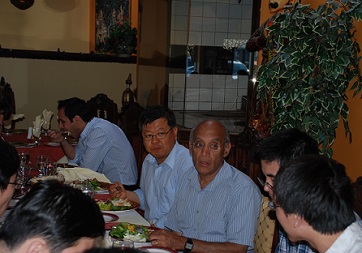
|

|
Design, Implementation and Evaluation of a Redundancy Management System for Fault-Tolerant Wireless Devices in Harsh Environments Madison McCarthy, Master of Engineering Science, 2019 Thesis Abstract Wireless sensor networks (WSNs), when deployed in harsh environments, can fail prematurely due to elevated rates of component failures. To counteract this problem, fault-tolerant techniques, such as redundancy, may be used. A redundant design requires a management system. Built-in tests (BITs) are one of the most commonly used approaches for managing redundancy, but it suffers from issues such as imperfect fault coverage and common-cause failures (CCFs). In this work, a BIT based redundancy management system has been designed that makes use of a supervisory unit and a modular architecture to address issues with imperfect fault coverage and CCFs. The design has been implemented in prototype WSN devices and evaluated through reliability analysis, fault injection testing and industrial test deployments. The evaluation results have demonstrated the fault-tolerant capabilities of the proposed system design. |
|

|
Integration of RFID and Industrial WSNs to Create A Smart Industrial Environment Ning Pan, Master of Engineering Science, 2018 Thesis Abstract A smart environment is a physical space that is seamlessly embedded with sensors, actuators, displays, and computing devices, connected through communication networks for data collection, to enable various pervasive applications. Radio frequency identification (RFID) and Wireless Sensor Networks (WSNs) can be used to create such smart environments, performing sensing, data acquisition, and communication functions, and thus connecting physical devices together to form a smart environment. This thesis first examines the features and requirements a smart industrial environment. It then focuses on the realization of such an environment by integrating RFID and industrial WSNs. ISA100.11a protocol is considered in particular for WSNs, while High Frequency RFID is considered for this thesis. This thesis describes designs and implementation of the hardware and software architecture necessary for proper integration of RFID and WSN systems. The hardware architecture focuses on communication interface and AI/AO interface circuit design; while the driver of the interface is implemented through embedded software. Through Webbased Human Machine Interface (HMI), the industrial users can monitor the process parameters, as well as send any necessary alarm information. In addition, a standard Mongo database is designed, allowing access to historical and current data to gain a more in-depth understanding of the environment being created. The information can therefore be uploaded to an IoT Cloud platform for easy access and storage. Four scenarios for smart industrial environments are mimicked and tested in a laboratory to demonstrate the proposed integrated system. The performance of the implemented system has been evaluated. The experimental results have showed that the communication from RFID reader to WSN node and the real-time wireless transmission of the integrated system meet design requirements. In addition, compared to a traditional wired PLC system where measurement error of the integrated system is less than 1%. The experimental results are thus satisfactory, and the design specifications have been achieved. |
|

|
Design and Implementation of Smart Sensors with Capabilities of Process Fault Detection and Variable Prediction An He, Master of Engineering Science, 2017 Thesis Abstract A typical sensor consists of a sensing element and a transmitter. The major functions of a transmitter are limited to data acquisition and communication. The recently developed transmitters with ‘smart’ functions have been focused on easy setup/maintenance of the transmitter itself such as self-calibration and self-configuration. Recognizing the growing computational capabilities of microcontroller units (MCUs) used in these transmitters and underutilized computational resources, this thesis investigates the feasibility of adding additional functionalities to a transmitter to make it ‘smart’ without modifying its foot-print, nor adding supplementary hardware. Hence, a smart sensor is defined as sensing elements combined with a smart transmitter. The added functionalities enhance a smart sensor with respect to performing process fault detection and variable prediction. This thesis starts with literature review to identify the state-of-the-arts in this field and also determine potential industry needs for the added functionalities. Particular attentions have been paid to an existing commercial temperature transmitter named NCS-TT105 from Microcyber Corporation. Detailed examination has been made in its internal hardware architecture, software execution environment, and additional computational resources available for accommodating additional functions. Furthermore, the schemes of the algorithms for realizing process fault detection and variable prediction have been examined from both theoretical and feasibility perspectives to incorporate onboard NCS-TT105. An important body of the thesis is to implement additional functions in the MCUs of NCS-TT105 by allocating real-time execution of different tasks with assigned priorities in the real-time operating system (RTOS). The enhanced NCS-TT105 has gone through extensive evaluation on a physical process control test facility under various normal/fault conditions. The test results are satisfactory and design specifications have been achieved. To the best knowledge of the author, this is the first time that process fault detection and variable prediction have been implemented right onboard of a commercial transmitter. The enhanced smart transmitter is capable of providing the information of incipient faults in the process and future changes of critical process variables. It is believed that this is an initial step towards the realization of distributed intelligence in process control, where important decisions regarding the process can be made at a sensor level. |
|

|
Investigation of Model Predictive Control (MPC) for Steam Generator Level Control in Nuclear Power Plants Ahmad Osgouee, Master of Engineering Science, 2017 Thesis Abstract The capabilities and potential of Model Predictive Control (MPC) based strategies for steam generator level (SGL) controls in nuclear power plants (NPPs) have been investigated. The performance has been evaluated for all operating conditions that also include start-ups, low power operations and load rejections. These evaluations have been done for MPC controllers based on existing advanced methodologies, as well as for any potential performance improvement that can be achieved by fine tuning some of the parameters (based on the characteristics of the SGL) of the existing MPC approaches. Two version of MPC have been designed and implemented. The Standard MPC (SMPC) has investigated the performance of existing advanced MPC methodologies. The Improved MPC (IMPC) has investigated potential performance improvement over SMPC by selecting appropriate values in the weight matrix of the objective function. Performance of MPC based approaches has been evaluated and compared with an optimized PI controller in term of i) set point tracking, ii) load-following, iii) transient responses, and iv) effectiveness subject to steam and feed water flow disturbances and feed water flow signal noise. The performance evaluation has been done through computer simulation, and also through simulation on a mock-up steam generator level system. The simulation results indicate strong potential for MPC based strategies, in particular for IMPC strategy, for effective control of the steam generator levels in nuclear power plants. |
|
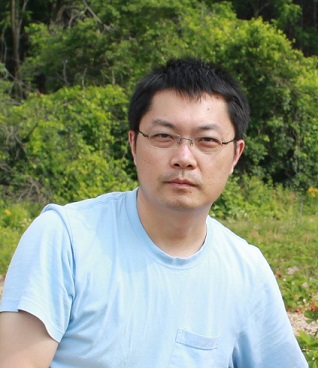
|
Modeling, Construction and Simulation of a Software Simulator for a Nuclear Process Control Test Facility Binggang Cui, Master of Engineering Science, 2015 Thesis Abstract This thesis presents the modeling, construction, and validation of a software simulator for a facility with physical components, referred to as NPCTF (Nuclear power plant Process Control Test Facility). The simulator focuses simulation functionalities on dynamic behaviours of thermal-hydraulic systems related to nuclear power plants. The modeling techniques adopted to construct the simulator are based on physical principles. Dynamic models are established as the foundation to reproduce the dynamic characteristics of NPCTF. Through programming the mathematical relations into computer codes with the toolbox Simscape, the simulators can be used to simulate specific scenarios under given conditions. A simulation environment, in this case the toolbox Simscape in Simulink of Matlab, is selected as the platform to set up the simulator. With the features of a physical network approach and built-in component library in Simscape as well as custom-defined blocks created upon the formed dynamic models, the diagram of the simulator is constructed by integrating component blocks into a primary coolant loop, secondary water loop, pressurized air loop, and some auxiliary loops within physical domains. The integration of components forms a mathematical matrix to represent underlying principles of the NPCTF. By employing an implicit fixed-step solver and identifying appropriate parameters of global configuration and component blocks, the simulator can produce similar responses of NPCTF, under similar conditions. A specification, a configuration, and a scheme are proposed to implement the development of the simulator. Through verification and validation, it has been concluded that the developed simulator can be used in conjunction with NPCTF to support instrumentation and control system research for nuclear power plants. |
|
|
Design, Implementation, and Verification of a Reactor Protection System for Nuclear Power Plant using HFC6000 Michael Gverzdys, Master of Engineering Science, 2015 Thesis Abstract Recently, a nuclear power plant physical simulator has been constructed at the University of Western Ontario using industry-grade sensors and actuators. This facility supports research and education in nuclear control, instrumentation, and hardware design. This platform, the Nuclear Power Control Test Facility (NPCTF), provides means to safely inject faults and examine their effects on the system. The NPCTF may be configured as a number of nuclear power plant (NPP) types, but focus has been placed on CANDU type. In a CANDU based NPP, there are two decision-making units capable of actuating two shut down systems. These units form the reactor protection system, and monitor critical system variables to ensure they remain within safe operating limits. For this work, in ongoing efforts to further improve the fidelity of the NPCTF, a dedicated reactor protection system has been realized. This system has been implemented through USNRC certified PLC, known as HFC 6000. This has been integrated with the NPCTF through a standard industrial interface, and performs monitoring and logic. The reactor protection system responds to contingencies by issuing trip signals and performing other related shutdown functions. The designed system has undergone a full verification and validation (V&V) procedure. Nine CNSC design basis events have been considered under full-system testing, including the loss-of-coolant-accident and loss-of-reactor-control. The designed logic achieved a 100% success rate on 25 trials. Further, the implemented system produced no spurious trips during normal operations. The relationship between CANDU type NPPs and the NPCTF has been established. The work has also concluded that the NPCTF is capable of replicating the real dynamics of an NPP. Through V&V testing, the HFC 6000, the designed logic, and total implemented system have been proven to be successfully realized according to CNSC criteria. |

|
|

|
Control System Design, Analysis, and Simulation of a Photovoltaic Inverter for Unbalanced Load Compensation in a Microgrid Elizabeth K.Tomaszewski, Master of Engineering Science, 2015 Thesis Abstract This thesis presents a control scheme for a single-stage three-phase Photovoltaic (PV) converter with negative sequence load current compensation. In this thesis a dual virtual impedance active damping technique for an LCL filter is proposed to address the issue of LCL filter resonance. Both inverter-side current and the capacitor current are used in the feedback loop. Using both signals provides higher DC rejection than using capacitor current alone. The proposed active damping scheme results in a faster transient response and higher damping ratio than can be obtained using inverter-side current alone. The feedback gains can be calculated to achieve a specified damping level. A method of determining the gains of the Proportional and Resonant current controller based on frequency response characteristics is presented. For a specified set of gain and phase margins, the controller gains can be calculated explicitly. Furthermore, a modification is proposed to prevent windup in the resonator. A numerically compensated Half-Cycle Discrete Fourier Transform (HCDFT) method is developed to calculate the negative sequence component of the load current. The numerical compensation allows the HCDFT to accurately estimate the fundamental component of the load current under off-nominal frequency conditions. The proposed HCDFT method is shown to have a quick settling time that is comparable to that obtained with conventional sequence compensation techniques as well as immunity to harmonics in the input signal. The effect of unbalance compensation on the PV power output depending on the irradiance and the operational region on the power-voltage curve is examined. Analysis of the DC link voltage ripple shows the region of operation on the P-V curve affects the amplitude of the DC link voltage ripple during negative sequence compensation. The proposed control scheme is validated by simulation in the Matlab/Simulink® environment. The proposed control scheme is tested in the presence of excessive current imbalance, unbalanced feeder impedances, and non-linear loads. The results have shown that the proposed control scheme can improve power quality in a hybrid PV-diesel microgrid by reducing both voltage and current imbalance while simultaneously converting real power from a PV array. |
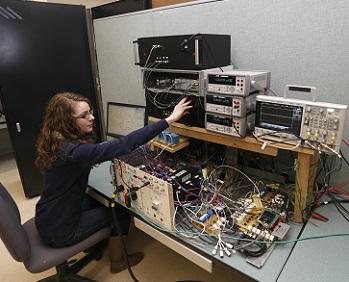
|

|
Configuration, Programming, Implementation and Evaluation of Distributed Control System for a Process Simulator Ximing (Simon) Liu, Master of Engineering Science, 2015 Thesis Abstract A common industrial distributed control system (DCS), DeltaV, is configured and programmed to control and monitor the Nuclear Process Control Test Facility (NPCTF). A cabinet which holds the hardware of the DelatV DCS system, including programmable logic controller (PLC), power supplies, input/output (I/O) cards, terminals, and relays are configured and wired to field devices of NPCTF. A workstation and HMI screen are configured and setup. To implement the main functions of NPCTF in the DelatV system, the programming architecture is designed in the DelatV system. The main control and monitoring functions of NPCTF are programmed using industrial languages of Function Block Diagram (FBD) and Sequential Function Chart (SFC) by IEC61113-3. Safety interlocks are added in the program to protect the NPCTF devices from damage. A HMI is developed to operate and monitor the NPCTF. Through the HMI, the operator can monitor the parameters of process of NPCTF, operate the NPCTF, change parameters of the controller, and force the devices. The process model of SG (Steam Generator) Tank level control is developed using the MATLAB System Identification tool. The model is taken as an example to demonstrate the process of analysis and design the controller of process control. PID is used as the controller algorithm. The main control and monitoring functions of NPCTF in the DeltaV system are commissioned, tested and evaluated. The evaluation results conclude that the DelatV DCS system can control the NPCTF to achieve the main functions of the NPCTF. |
|
|
A CFD Assisted Control System Design for Supercritical Water Cooled Reactor Rohit Maitri, Master of Engineering Science, 2014 (Co-supervised with Dr. Chao Zhang) Thesis Abstract In this study, the methodology to construct a control system based on computational fluid dynamics (CFD) simulations is developed for supercritical water cooled reactor (SCWR). The CFD model using Reynolds Stress Model (RSM) and k - ?SST model is validated with the experimental cases of steady state and vertically up flowing supercritical water in circular tubes for normal heat transfer and deteriorated heat transfer (DHT) cases. This model is extended to simulate the transient thermal-hydraulic behaviour of supercritical fluid flow and heat transfer, and the results are also compared with the 1-D numerical model, THRUST. The DHT phenomenon is investigated using the turbulence kinetic energy (TKE) and velocity distribution and their effect on the heat transfer. A correlation is reported between the TKE and velocity profiles and heat transfer phenomenon at supercritical condition. The non-dimensional buoyancy and acceleration parameters are also used to predict the occurrence of DHT in the supercritical water flow in circular tubes. In the process of developing a control system for Canadian version of SCWR, system identification method is used to develop the linear dynamic models based on non-linear CFD simulations. Considering the strong cross-coupling between the inputs and outputs of the SCWR, multiple input and multiple output (MIMO) system is decoupled and is converted to several single input and single output (SISO) systems using pre-compensator. Based on the decoupled SISO systems, loop compensator is developed for the control and stability of the reactor. |
||
|
A Dual-Rate Model Predictive Controller For Fieldbus Based Distributed Control Systems Mohammad Arif Hossain, Master of Engineering Science, 2013 Thesis Abstract In modern Distributed Control Systems (DCS), an industrial computer network protocol known as fieldbus is used in chemical, petro-chemical and other process industries for real-time communication between digital controllers, sensors, actuators and other smart devices. In a closed-loop digital control system, data is transferred from sensor to controller and controller to actuator cyclically in a timely but discontinuous fashion at a specific rate known as sampling-rate or macrocycle through fieldbus. According to the current trend of fieldbus technology, in most industrial control systems, the sampling-rate or macrocycle is fixed at the time of system configuration. This fixed sampling-rate makes it impossible to use a multi-rate controller that can automatically switch between multiple sampling-rates at run time to gain some advantages, such as network bandwidth conservation, energy conservation and reduction of mechanical wear in actuators. This thesis is concerned about design and implementation of a dual-rate controller which automatically switches between the two sampling-rates depending on system’s dynamic state. To be more precise, the controller uses faster sampling-rate when the process goes through transient states and slower sampling-rate when the process is at steady-state operation. The controller is based on a Model Predictive Control (MPC) algorithm and a Kalman filter based observer. This thesis starts with theoretical development of the dual-rate controller design. Subsequently, the developed controller is implemented on a Siemens PCS 7 system for controlling a physical process. The investigation has concluded that this control strategy can indeed lead to conservation of network bandwidth, energy savings in field devices and reduction of wear in mechanical actuators in fieldbus based distributed control systems. |
||
|
Modeling of Partial Shading and Prediction of Power Peaks of PV Arrays with Experimental Validations Shiva Moballegh, Master of Engineering Science, 2012 Thesis Abstract The work presented in this thesis investigates the power losses in Photovoltaic (PV) applications due to partially shaded conditions and different electrical topologies of PV arrays. As the first step, a comprehensive modeling technique is proposed to model PV arrays under partially shaded conditions with flexible configuration of PV modules and bypass diodes. Validated by the experimental study, the model is used to derive equations to predict multiple power peaks of PV arrays when they are subject to the shaded conditions. This technique relies on solar irradiance and temperature measurements in order to predict the power yield of PV arrays with Series-Parallel (SP), Bridge-Linked (BL) and Total-Cross-Tied (TCT) configurations. Among multiple power peaks, this technique is able to identify the global maximum power. Furthermore, the most efficient configuration among SP, BL and TCT configurations is identified by comparing the global maximum powers of these configurations. Ultimately, this work benefits from such capability to propose an effective strategy which adaptively modifies the interconnections within the PV array in order to optimize its power yield under partially shaded conditions |

|
|
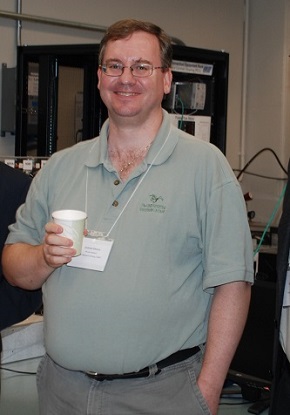
|
Design, Implementation And Evaluation Of A Microgrid In Island And Grid Connected Modes With A Fuel Cell Power Source Andrew T. Moore, Master of Engineering Science, 2012 Thesis Abstract The ability to connect a microgrid to the grid is an important step in the development and evolution of the modern power system. The principle objectives of this research are (1) to simulate a simple microgrid consisting of a PEM hydrogen fuel cell, load and connection to the grid and (2) to evaluate the resulting microgrid control system on a corresponding experimental microgrid. The microgrid simulation demonstrated that the control algorithms can operate the microgrid in both islanded (VSC with voltage and frequency regulation) and grid connected (VSC with current control for power transfer). The experimental laboratory microgrid was constructed and operated in real-time performing its black start and managed transitions between island and grid connected modes of operation. The synchronization method adjusted the island microgrid to become in phase with the grid and tracked well under steady state and load changing conditions. The synchronization process brought the island in phase with the grid within 400 ms. Passive island detection was demonstrated with the restoration to grid operation. The grid connected voltage and current THD were under 1%. |
|
|
An Inverse Control-Based Set-point Function for Level Control in a U-Tube Steam Generator for Nuclear Power Plants Mahmood Akkawi, Master of Engineering Science, 2011 Thesis Abstract In this thesis, the water level control problem of U-Tube Steam Generators (UTSG) of Nuclear Power Plants (NPP) is investigated. The water level of a UTSG must be regulated within an admissible range to assure safe and economic operation. Additionally, a high dynamic performance is desired when adjusting the level within the admissible range, because poor performance could eventually shorten the designed life of various instruments of the SG. Poor performance can also degrade the quality of the generated power. Difficulty in controlling the water level is mainly due to the highly nonlinear and inverse dynamics of the UTSG caused by a non-minimum phase phenomenon known as the swell and shrink effect. This thesis focuses on the synthesis of a set-point function to improve the performance of the UTSG level control system under the presence of NPP power changes. The proposed set-point function is based on the concept of inverse control theory. Future information on the change in demanded power is used by the proposed control scheme to apply the set-point function pre-emptively. This pre-emptive control action allows the control system to prepare itself for the upcoming change in power. This preparation improves the performance of the control system considerably. Using the Irving UTSG model, simulation results within MATLAB/SIMULINK show that the proposed control scheme is capable of regulating the level within the admissible range effectively. Regulation and level adjustment performance, herein, is measured in terms of the percentage overshoot and percentage undershoot of the level response. When compared to the widely used swell-based set-point function, the proposed control scheme can reduce the percentage overshoot and percentage undershoot by as much as 35.4% and 69.7%, respectively. |

|
|
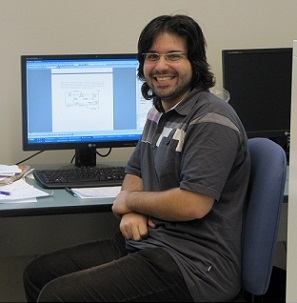
|
Modeling and Simulation of a Control System for a Microgrid with Multiple types of Energy Sources Hesam Hosseinzadeh, Master of Engineering Science, 2010 Thesis Abstract The work presented in this thesis performs a comprehensive study that explores the modeling and performance of a DC bus microgrid and the associated control system capable of operating under different weather and load conditions and operation modes. The power flow control of the system in the steady state is the main scope of this thesis. The work includes simulation investigation of the operation and performance of the different parts and modules of the microgrid. The investigation of generation side of the microgrid includes simulation and evaluation of different types of energy sources based on the realistic performance of these devices. The simulation models are provided and effective parameters of the performance of each unit is discussed. The energy sources that are studied in this research include photovoltaic and wind turbine as renewable energy sources, fuel cell as an alternative energy source, synchronous generator as a conventional and diesel generator as well as lead-acid battery as an energy storage device. An autonomous control strategy is developed and simulated in the control system of energy sources. The control system is designed and the power flow and load-sharing within the microgrid is studied in two general modes of operation: (1) grid-connected mode, when the microgrid is connected to the electricity network the lack of power can be imported from the utility grid. (2) stand-alone mode when, the microgrid is not connected to the utility grid and the power demand can be compensated solely by the microsources of the microgrid. The simulation results presented in this thesis show that the control system is capable of balancing the power between the load and generation and therefore the load-sharing can be achieved. |
|
|
Control and Optimization of Laminar Incompressible Fluid Flow David A. Brown, Master of Engineering Science, 2010 (Co-supervised with Dr. Chao Zhang) Thesis Abstract The purpose of this thesis is to present a numerical algorithm for the dynamical optimization of fluid flow systems that contain both geometric and control variables. This problem was formulated in an optimal control setting by specifying some performance functional to be minimized subject to the constraints provided by the discretized state equations. An algorithm was presented and applied successfully in the feedforward case to a simple fluid flow problem. Linear quadratic feedback control of laminar incompressible fluid was also studied with the eventual intention of incorporating feedback control into the optimization process. A feedback law was developed numerically for incompressible fluid flow systems in some special cases, but after some numerical analysis it became clear that this method would have to be developed further before it could be of any practical use. |
||
|
Numerical Simulation of Fluid Flow and Heat Transfer in Supercritical Water Cooled Reactor Yina Zhang, Master of Engineering Science, 2009 (Co-supervised with Dr. Chao Zhang) Thesis Abstract In this study, the computational fluid dynamics (CFD) simulations are carried out using the commercial software FLUENT to predict the thermal-hydraulic behavior of supercritical fluids in the Supercritical Water Cooled Reactor (SCWR) fuel channels. Different turbulence models are applied in the simulations of supercritical fluids in circular tubes. It is found that the Reynolds stress model gives better agreement with the experimental data than other turbulence models studied in this work. The thermal-hydraulic behavior of supercritical water in the triangular array and the square array fuel rod bundles is studied numerically. The turbulent mixing coefficient of supercritical water in subchannels is strongly dependent on fluid bulk temperature and pitch-to-diameter ratio in the vicinity of the pseudo-critical point. To have a higher overall turbulent mixing coefficient, the pitch-to-diameter ratio less than 1.2 is recommended for the design of SCWR. 3-D simulations of fluid flow and heat transfer of supercritical water in a 37-element fuel bundle are carried out. It is found that the circumferential temperature gradient in the cladding surface in the fuel bundle is very large. Therefore, the precise prediction of the cladding temperature distributions using the full-scale CFD method is needed. |
||
|
Data Integrity Protection For Security in Industrial Networks Mohsen Bahramali, Master of Engineering Science, 2009 Thesis Abstract Modern industrial systems are increasingly based on computer networks. Network-based control systems connect the devices at the field level of industrial environments together and to the devices at the upper levels for monitoring, configuration and management purposes. Contrary to traditional industrial networks which are considered stand-alone and proprietary networks, modern industrial networks are highly connected systems which use open protocols and standards at different levels. This new structure of industrial systems has made them vulnerable to security attacks. Among various security needs of computer networks, data integrity protection is the major issue in industrial networks. Any unauthorized modification of information during transmission could result in significant damages in industrial environments. In this thesis, the security needs of industrial environments are considered first. The need for security in industrial systems, challenges of security in these systems and security status of protocols used in industrial networks are presented. Furthermore, the hardware implementation of the Secure Hash Algorithm (SHA) which is used in security protocols for data integrity protection is the main focus of this thesis. A scheme has been proposed for the implementation of the SHA-1 and SHA-512 hash functions on FPGAs with fault detection capability. The proposed scheme is based on time redundancy and pipelining and is capable of detecting permanent as well as transient faults. The implementation results of the proposed scheme on Xilinx FPGAs show small area and timing overhead compared to the original implementation without fault detection. Moreover, the implementation of SHA-1 and SHA-512 on Wireless Sensor Boards has been presented taking into account their memory usage and execution time. There is an improvement in the execution time of the proposed implementation compared to the previous works. |
||
|
Active Steer-by-Wire Steering Control Based on Nonlinear Vehicle and Tire Models Yi Cui, Master of Engineering Science, 2008 (Co-supervised with Dr. R. O. Buchal) Thesis Abstract In this thesis, a nonlinear vehicle model with the nonlinear tire model is developed to generate more accurate yaw rate and sideslip responses. The response of the nonlinear model is compared to a vehicle model in ADAMS/Car for different vehicle speeds and front wheel steering inputs, and is shown to have more accurate steady-state response than the widely used linear model. This thesis also presents a linear model of the steering system actuated by a high torque brushless DC motor, and a PI controller is designed for the motor position control. Finally, a PID controller is designed to control the vehicle yaw rate for several vehicle speeds and steering inputs. Simulation experiments are conducted using the steering system model, nonlinear tire model and vehicle model developed in this thesis. The experiments show that PID is not sufficiently robust to provide acceptable performance over the full range of vehicle operating conditions, and a more advanced control should be investigated. |
||

|
Control and Operation of a Microgrid Involving a PEM Fuel Cell Through Analysis and Experimentation Zhutian Wang, Master of Engineering Science, 2008 Thesis Abstract The work presented in this thesis addresses the dynamic characteristics of a microgrid consisting of an inverter interfaced proton exchange membrane fuel cell (PEMFC) power module and two synchronous generators operating in an islanded mode. The work includes the experimental investigation of the dynamic characteristics of the distributed generators in this prototype microgrid. A control and operation system is developed for the prototype microgrid using LabVIEW program, data acquisition devices, and hardware sensing circuitries. This structure with hierarchical architecture, consisting of a control center at a supervisory level, and real-time controllers coupled with individual distributed generators, is used to facilitate the integration of multiple distributed resources into a microgrid. The detailed implementation of this system is presented in this thesis. The AC voltage and the frequency characteristics of the inverter interfaced PEMFC power module and the two synchronous generators in stand-alone application are investigated experimentally. Using the LabVIEW based microgrid control and operation instrumentation, the DC to AC conversion efficiency of the power electronic inverter is investigated under different load conditions. The load sharing issue of the prototype microgrid employs a novel scheme using load-voltage droops. A PC based feedback voltage regulator is designed for the inverter interfaced PEMFC. It is intended to achieve the dynamic load regulation of the inverter, and to verify the dynamic load sharing scheme with load-voltage droops. With the aid of the computer based microgrid control and operation system, two economic dispatch strategies are proposed with underlining roles that an alternative energy source may play in a microgrid. The advantages and disadvantages of both strategies are evaluated based on the utilization of the PEMFC power module. |
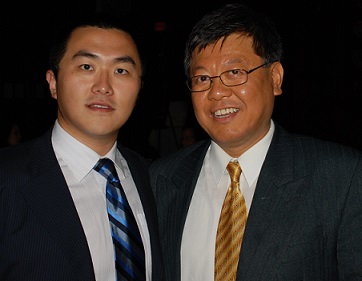
|
|
A Framework for the Evaluation of Distributed Control Systems in Industrial Control Applications Carlos O’Donell, Master of Engineering Science, 2008 Thesis Abstract The research develops a test-bench and framework to evaluate distributed control systems (DCSs) against industrial control system requirements. A real-time hardware-in-the-loop (HIL) test-bench and framework has been used for the evaluation of a DeltaV M3 DCS from Emerson Process Management. The test-bench measures: process control behaviour including overshoot and settling time; and I/O throughput, latency, and jitter for analog, digital, Modbus serial and OPC over Ethernet. The DCS successfully controls a real-time Matlab simulation model of a Nuclear Power Plant (NPP) steam generator, with a maximum water-level overshoot of 4.20%. The evaluated DCS has I/O throughput between 1.06 and 5.05 Hz, and latencies between 72 and 310 ms. The OPC over Ethernet is the most deterministic I/O channel, but has the lowest throughput. The test-bench and framework enables the evaluation of new technology for use in NPP and many other industrial control applications. |

|
|
|
Integration of Model-based Safety Assessment for Fault-tolerant Flight Control System Design Jinhui Zhang, Master of Engineering Science, 2008 Thesis Abstract The pursuit of fault tolerance in flight control systems can have a significant impact on increasing the survivability and safety of aircrafts. Despite these potential benefits, many proposed new techniques have not been adopted by the aviation industry. This is because the applicability of these techniques to practical applications has not been demonstrated. This thesis focuses on two pragmatic issues in an attempt to reduce the barriers to industrial acceptance of these techniques: 1) developing accurate analytical models of aircraft dynamics; and 2) validating of fault assumptions. A comprehensive benchmark aircraft simulation environment for fault-tolerant flight control and fault diagnosis studies is established. It combines a set of aircraft dynamic models with required analytical tools to facilitate the study of fault-tolerant issues with applications to nonlinear aircraft control systems. An overall design framework for fault-tolerant flight control systems with engineering insight is proposed. The model-based system safety assessment has been integrated into the design process of fault-tolerant control systems. In this way, the data relating to fault modes and effects can be readily accessed. Important practical considerations in fault-tolerant flight control such as fault modeling, fault mode analysis, system safety assessment, and redundancy analysis are explored in depth. The methods and results of fault analysis and redundancy analysis are illustrated with study examples of the developed aircraft benchmark. The results from fault analysis produce the database information on fault modes and effects, which are useful for establishing realistic fault assumptions and fault model parameterization. The redundancy results provide an indication of which duplications are available for fault diagnosis and fault tolerance within the flight control system when certain faults occur. |
||
|
Development of a Hardware-in-the-loop Simulation Platform for Safety Critical Control System Evaluation Drew James Rankin, Master of Engineering Science, 2008 Thesis Abstract During the lifetime of a nuclear power plant (NPP) safety electronic control system components become obsolete [7]. It is difficult to find replacement components qualified for nuclear applications [50]. Due to strict regulations, replacement components undergo extensive verification and operational analysis [70]. Therefore, the need for a platform to evaluate replacement safety control systems in a non-intrusive manner is evident. Verifying the operation or functionality of potential replacement electronic control systems is often performed through simulation [71]. To enable simulation, a physical interface between potential control systems and computer based simulators is developed. System connectivity is established using Ethernet and standard industrial electrical signals. The interface includes a National Instruments (NI) virtual instrument (VI) and data acquisition system (DAQ) hardware. The interface supports simulator controlled transmission and receipt of variables. The transmission of simulated process variables to and from an external control system is enabled. This is known as hardware-in-the-loop (HIL) simulation [49]. Next, HIL interface performance is verified and the following are identified; a measure of availability; the effect of varied configurations; and limitations. Further, an HIL simulation platform is created by connecting a NPP simulator and a programmable logic controller (PLC) to the interface, Canadian Deuterium Uranium (CANDU) reactor training simulator and Invensys Tricon version nine (v9) safety PLC respectively. The PLC is programmed to operate as shutdown system no. 1 (SDS1) of a CANDU reactor. Platform availability is verified and the response of the PLC as SDS1 and is monitored during reactor shutdown. Proper execution of the steam generator level low (SGLL) logic on the PLC and variable transmission are observed. Thus, a platform and procedure for the evaluation of replacements for obsolete electronic control system components is demonstrated. |
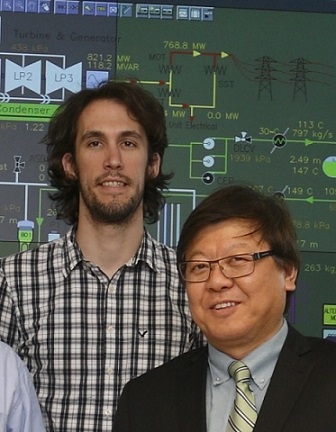
|
|
|
Fault Detection and Isolation in Fixed In-Core Flux Detectors Jianping Ma, Master of Engineering Science, 2008 (Co-supervised with Dr. Chao Zhang) Thesis Abstract Fault Detection and Isolation (FDI) in the fixed In-Core Flux Detectors (ICFDs) installed in CANDU nuclear reactors has great significance for reactor safety and economy. Most ICFDs have a number of proximate peers and those neighbouring ICFDs are correlated with each other. An analytical redundancy-based FDI strategy is proposed in this thesis for the correlated ICFDs, where the output of one ICFD is estimated from the outputs of its correlated peers using a mathematical model that describes their correlations. The estimation residuals are analyzed for fault detection and isolation. The Principal Component Analysis (PCA), Moving Average (MA) and Instrumented Flux Synthesis (IFS) techniques are selected to evaluate the proposed strategy. The performances of the PCA and MA based schemes are validated with considerable success using data from the ICFDs for flux mapping, overpower protection and control in several CANDU reactors with practical faults. The IFS based scheme is validated using data from a simulated process. The validation results are presented in this thesis, as are suggestions for future work. |

|
|
|
Modified Markov Method for Calculating the Probability of Failure on Demand for Safety Instrumented Functions Dipak Patki, Master of Engineering Science, 2007 Thesis Abstract Large-scale process industries and nuclear power plants typically include two types of control systems: 1) the Distributed Control Systems (DCS) which is used for continuous regulation of the process plant, and 2) the Standby Safety Instrumented System (SIS) which monitors the operating conditions of the process and acts only when some pre-defined process variables exceed the allowable limits. Typically, SIS consists of multiple Safety Instrumented Functions (SIFs) and acts only when required. IEC 61511 and IEC 61508 provide guidelines to assign Safety Integrity Level (SIL) ratings to SIF based on the criticality class and Health, Safety and Environment (HSE) consequences associated with it. Probability of Failure on Demand average (PFDavg) is the average probability of a SIF that fails to respond to a demand in a specified time interval. Calculation of PFDavg and Demand mode value for each SIF is required to meet SIL rating criteria. IEC standards do not provide guidelines to calculate demand mode. This is a key requirement and this thesis proposes a method to calculate the demand mode. Markov’s method of PFDavg calculation consists of failure rate per hour and test duration. Researchers in this area have identified this as a gap and have made proposals for improvements in Markov’s method of PFDavg calculation by adding safe failure, dangerous failure and coverage factor. No attempts have been made to define ways to calculate safe failure, dangerous failure and coverage factor and to consider those values in Markov’s method of PFDavg calculation. This thesis extends the current method of PFDavg calculation by considering safe failure rate, dangerous failure rate and test coverage factor and presents a mathematical method to calculate PFDavg. This thesis identifies further improvements in calculating PFDavg that considers device common mode failure, failures caused by online repair and testing and device diagnostics. It further extednds PFDavg calculation to include the above factors and provides mathematical approach to calculate PFDavg. |
||
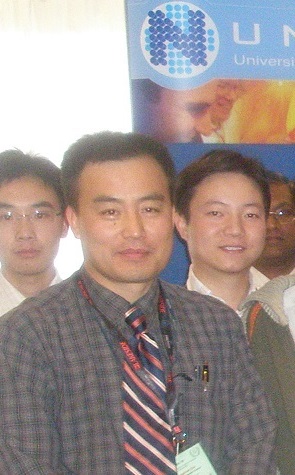
|
Design and Analysis of the Surveillance Test Intervals for Shutdown Systems Sungwhan Cho, Master of Engineering Science, 2006 Thesis Abstract In this thesis, the surveillance test interval for shutdown systems in a nuclear power plant has been investigated through both mathematical analysis and computer simulations. The thesis emphasizes the fact that, in testing a shutdown system, one not only has to consider the benefit of short test intervals (i.e. more frequent tests), but also has to know the risks and consequences of introducing potential spurious trips. Such a problem has been formulated analytically using two probabilistic models in this thesis. Based on these two models, the effects of surveillance test intervals on the availability of the overall system as well as on the core damage probability have been thoroughly examined in this thesis. Throughout the analysis, the Shut Down System Number 1 (SDS1) in a CANDU based nuclear power plant has been used. The first model uses a Markov process to quantify the unavailability and the probability of spurious trips as a function of the surveillance test interval. The second model examines the effect of the unavailability and the spurious trip probability on the core damage probability by considering failures of Class IV power source in the station. Through the analytical analysis and computer simulations, the thesis concludes that there exists an optimal test interval for such type of systems. The probability of the core damage will, in fact, be higher when either a shorter or a longer test interval is used. The thesis not only formulates this practical problem for arriving at an easy solution, it also provides a tool from which the optimal surveillance test interval can be determined to provide the lowest core damage probability. |
|

|
Instrument Fault Detection in CANDU Nuclear Reactors using a Modified Dedicated Observer Scheme Lee Leonard Rehorn, Master of Engineering Science, 2005 Thesis Abstract Replacing or fortifying the redundant sensors used in current CANDU nuclear power plants (NPPs) with analytical redundancy is seen as a way to improve efficiency and safety, and reduce reactor down-time. This thesis details the development of an analytical redundancy scheme that could be used in NPPs to achieve these benefits. Based on criteria that are especially relevant to the nuclear industry, modifications to the standard dedicated observer scheme (DOS) were undertaken; adaptive thresholds and a faulty value estimation and replacement algorithm were added. The validity of these modifications was tested with a loss-of-fluid test (LOFT) reactor pressurizer model that is often referred to in the literature, as well as a CANDU reactor reactivity flux model that was derived from a training simulator. Results of simulations are presented, as are conclusions about the modified DOS’s applicability to real systems and recommendations for future work. |
|
|
Power system damping improvement with SVC auxiliary control Ran Peng, Master of Engineering Science, 2004 (Co-supervised with Dr. Rajiv Varma) Thesis Abstract The selection of an appropriate signal for the State Var Compensator (SVC) auxiliary controller is investigated in this thesis, as well, a new remote signal, generator rotor speed (GRS), is proposed. The effectiveness of the GRS as an SVC auxiliary control signal is verified in three systems. A comparison of damping performance of auxiliary controllers with different control signals is carried out using nonlinear time-domain simulations in a Signal Machine Infinite Bus (SMIB) system. The signals used include locally available signals, computed internal frequency (CIF), and GRS. Then multi-machine systems that include a two-area four-machine system and a Western System Coordinating Council (WSCC) 9-bus system are examined. The choice of a specific generator whose rotor speed would be most suitable as SVC auxiliary control signal is based on the participation factors of each generator rotor speed (GRS) corresponding to the inter-area oscillation mode. The efficacy of the selected GRS signal is verified by comparing its damping performance with those of other GRSs and commonly used local signals. The SVC control system is design using nonlinear time-domain simulations through PSCAD/EMTDC software. It is concluded from this study that remote GRS signals perform better than conventional locally measured signals in damping low frequency power oscillations. The synthesized CIF can be used as an alternative to GRS in a SMIB system. |

|
|
|
Modelling, Control and Simulation of a Grid-Connected Fuel Cell Power Plant Srdjan Stevandic, Master of Engineering Science, 2004 Thesis Abstract In this thesis the models of the proton exchange membrane fuel cell (PEM FC) and grid-connected fuel cell power plant (FCPP) are derived. The generalized mechanistic/empirical steady-state electrochemical model of the PEM FC membrane electrode assembly (MEA) is adopted. The dynamic model of a MEA describing thermodynamic and component balance dynamic behavior is modified to suit PEM FC. The dynamic explicit model is derived that identifies the time constants of the MEA. The equivalent model correlates the model parameters and time constants with an equivalent representation of a PEM FC. The explicit static characteristics in arbitrary and specific qd-reference frames in PU system are derived for a fuel cell power plant (FCPP), a fuel cell interfaced with the utility network via a DC/AC PWM converter and an isolation/step-up transformer. Power and voltage regulation of the FCPP are examined with respect to the parameters and the relative strength of the utility network. Finally, an isothermal (reduced order) dynamic model and simplified linearized dynamic model of a FCPP are derived in the PU system. A simple voltage-source current control (VSCC) strategy that can be implemented in qd-reference frame is also analyzed. The proposed decoupled feedback proportional and integral (PI) controller design allows for the independent selection of the controller proportional and integral parameters for the desired response. Finally, several case studies have been simulated using Matlab Simulink block set. |
||
|
NOx Control in Industrial Furnaces Qing Jiang, Master of Engineering Science, 2004 (Co-supervised with Dr. Chao Zhao) Thesis Abstract This thesis reports research work carried out to construct on-line real-time dynamic feedback controllers that will reduce the NOx emission in an industrial furnace. The work began with a detailed analysis of the mechanisms for NOx formation. Based on the knowledge gained, a low NOx furnace was designed using CFD modeling techniques to optimize the furnace configurations. The arrangement of the mixing box for recirculated flue gas and fresh air has been determined using numerical simulations. The research has shown that flue gas recirculation (FGR) is an effective way to reduce NOx. To gain a better understanding of the dynamic characteristics of the furnace, the sensitivity of the furnace to the variations of different furnace inputs has been evaluated in the frequency domain by superimposing sinusoidal signals onto the following three furnace inputs: combustion air flow rate, combustion air temperature, and the pressure head of the recirculation fan. The furnace outputs considered were the mole fraction of NOx and the mass fraction of oxygen. Frequency domain based system identification techniques have been used to convert the frequency responses to a set of transfer function representations in an effort to facilitate the control system design. Four transfer functions have been constructed and the accuracy of these transfer functions are further evaluated by means of CFD simulations. It was concluded that these transfer functions can indeed provide an accurate representation of the dynamic behaviours of the furnace around given operating conditions. To ensure that the furnace operates around the designed operating conditions most favourable to NOx minimization under various disturbances or uncertainties, possible regulation of the furnace inputs through feedback control has been investigated. Based on the knowledge gained of the dynamic relationships between the furnace inputs and outputs, a control system composed of one Pill and two PI controllers has been synthesized by using nonlinear optimization techniques. The performance of the closed-loop control system has been evaluated based on both the linear models and full-scope nonlinear CFD models. In both cases, satisfactory results have been obtained. The main contribution of the thesis was to develop a methodology for the design and analysis of feedback control based NOx reduction technologies for industrial furnaces. |
||
|
Design and Implementation of Sensorless Control of a Permanent Magnet DC Brush Servomotor Xiang Li, Master of Engineering Science, 2003 Thesis Abstract Traditionally, a motor control system relies on feedback sensors to provide real-time speed and position information for real-time control purpose. However, use of such sensors increases the cost and complexity of the overall system, which could also lead to reduced reliability in the event of sensor malfunction. Eliminating these sensors not only reduces the total cost but also increases the reliability of the entire control system. As a result, there is a great deal of interest in studying the sensorless speed and/or position control systems. In this thesis, an observer-based sensorless speed and/or position control scheme is proposed. Using internal voltage and current measurement, together with the known motor mathematical model, the motor speed and/or position can be estimated in real time. Once established, the estimated signals can be used for the speed and/or position control of the motor system. Proportional-Integral-Derivative (PID) control structure is considered in this study and an experimental test system consisting of a permanent magnet DC brush servomotor test-bed has been set up for this work. Theoretical, simulated and experimental results are presented to demonstrate the effectiveness of the proposed schemes. |
||
|
Design and Prototyping an Optimal Shock Damping Caster Runling Pan, Master of Engineering Science, 2003 Thesis Abstract This thesis is an investigation into the shock damping isolator design for casters which are widely used to protect delicate loads from external shock and vibration. A shock environment is considered to be the working condition, and the example of a caster rolling over a bump is a specific shock condition for the purpose of dynamics modeling and shock damping performance analysis. A worst case scenario of shock modeling is investigated and used to simplify the analysis, due to the uncertain information about the shock excitations in practical situations. The shock damping isolator design id formulated as an optimization problem to minimize the peak acceleration of a load while keeping the peak isolator deflection within physical constraints. A constant force isolator is proposed as the optimal design from an energy point of view and a consideration of the water-bed effect. Several methods for implementing a constant force are introduces and one of those , the multiple springs combination structure, is discussed in detail. It includes modeling, parameter optimization and adaptive ability analysis. The approach formulated has been applied successfully to the modification of an existing caster design. Geometrical modeling and motion simulations have been performed for the unmodified and the modified versions of the design and it has been observed that the modified caster provides superior peak acceleration suppression compared to the original caster without sacrificing the peak isolator deflection. Furthermore, experimental results of a physical prototype of the modified caster are compared to the simulation results. Robustness of the modified caster has also been tested under a variety of shock conditions to demonstrate the adaptive ability in terms of peak acceleration and peak deflection. |
||
|
Fault-tolerant flow sharing control of aircraft engine bleed air system Guozhong Bao, Master of Engineering Science, 2003 Thesis Abstract Engine bleed air is required by a number of aircraft systems including the environmental control system as a source of air for cabin conditioning and pressurization. The bleed air usage affects the performance and life cycle cost of the air craft engines. In order to minimize the impact of bleed air penalty upon engine performance, it is desirable to equalize the bleed air extraction from each engine. This thesis provides simulation and experimental investigation results of the fault-tolerant master-slave flow sharing control of an aircraft engine bleed air system (BAS). A linearized state-space model of a two-engine bleed air system is developed, and simulations of both master-slave control and conventional non-interacting pressure control are conducted with comparisons. In order to improve the fault tolerance capability of the master-solve control scheme, a new fault detection, isolation, and accommodation (FDIA) scheme for soft sensor fault is proposed and applied to the engine bleed flow sharing control. Finally, the master-slave flow sharing control for the engine bleed air system has been tested experimentally on a test rig. Step and sinusoid response tests were carried out for two-channel and four-channel systems. Both simulation and experimental results demonstrate the effectiveness of the master-slave control application to the air craft engine bleed air system. |
||
|
Analysis of Interaction and Design of a Coordinating Control Scheme for Two SVC FACTS Devices Raymond S.C. Chokelal, Master of Engineering Science, 2002 Thesis Abstract The generation of electricity has now become deregulated in Ontario. With that, every sector of the power industry is seeking ways to best utilize existing systems to cut down the cost of generation and increase profits. To best facilitate switching, compensation and control of power flow; it is now becoming more cost effective to install (Flexible AC Transmission Systems) FACTS and Custom Power Devices on the distribution voltage level. This thesis examines the potential interaction between two Static VAr Compensators installed on a specific portion of the distribution network associated with an industrial customer. Through extensive computer simulation based on industrial three-phase (3?) loading, interactions between devices on the system’s voltage profile ranging from mild to very extreme have been observed. Such interactions clearly indicate the need for coordination between these two SVCs. Therefore, a coordinating control scheme between two FACTS devices has been designed in the thesis. The coordinating controller provides desired coordination, synchronization and improvement in the overall voltage profile under a wide range of loading conditions. The most significant improvement by using such control scheme is observed during heavy system loading under cold load pick up. It is shown, through simulation, that the coordinated controller scheme can provide significant improvement in the voltage profile of the system and prevent the two FACTS devices from destabilizing the voltage stability of the system under various load conditions. |
||
|
Machine Tool Spindle Dynamics: Identification, Modelling and Effects on Machining Adam Gregory John Rehorn, Master of Engineering Science, 2001 (Co-supervised with Dr. Peter Orban) Thesis Abstract This thesis presents an investigation into the identification and modelling of the impulse response transfer function matrix of a machine tool spindle; it presents the results of experiments performed to determine the effects of these dynamics on the outcome of the machining process, and the effects of machining parameters on the response of the machine tool system. Impact testing and modal analysis of the spindle system of a Barer Proteo D/94 precision milling center was undertaken for the purpose of identifying and modelling the natural structural dynamics of a machine tool system. The resulting responses were modelled as a second-order system; data analysis confirmed this simple form as superior to more complex forms. Because the sensors required fixed mountings, it was necessary to position them on the spindle case for the monitoring of machining operations. Thus, it was also necessary to identify the dynamics of the case. Impact testing and modal analysis were used. The models generated were created from the combination of several second order systems, and were therefore more complicated than the spindle models. The non-linear nature of the machine tool spindle response was also investigated. It was found that the characteristics of the system depended on the input force. With the dynamics of the spindle and case identified, cutting simulations were undertaken to examine the effects of the spindle dynamics on the outcome of machining. Experiments were also performed to investigate the effects of machining conditions on the dynamic response of the spindle case. Tests were performed with the spindle rotating at various speeds under both machining and non-machining conditions. The effects of feedrate and spindle speed on the response of the case were then determined. The result of the work performed in this thesis is a set of mathematical models that describe the dynamics of a machining tool spindle system and its case, and clarify the non-linear characteristics of the same. The effects of the dynamics on machining are identified, and the effects of cutting conditions on the dynamic response of the spindle case are shown. |
||
|
Heart Sound Analysis Using Time - Frequency Transforms Georges Livanos, Master of Engineering Science, 2000 Thesis Abstract Central to this study was a pathological heat sound called opening snap (OS). The first objective was to detect this sound in recordings in which it occurred too close in time to one of the normal sounds, the second heart sound (S2). The second objective was to differentiate between OS and another sound, the third heart sound (S3), which has a different pathological origin but can easily be mistaken for OS. Towards these objectives, three techniques were used and their performance was compared: The Short Time Fourier Transform (STFT), the S Transform (ST) and the Continuous Wavelet Transform (CWT). These are among many transforms the yield time-frequency or time-scale representations of signals. The ST proved to be better in meeting the objectives, mainly because it yielded highly distinct patterns for visually representing each kind of sound. Being a relatively new transform, the ST had not been applied to heart sounds in the past. |
||
|
Nonlinear Phenomena and Control in Power Systems Xin Zhang, Master of Engineering Science, 1998 Thesis Abstract In the first part of the thesis, the subharmonic bifurcation and chaotic behavior in a single machine infinite bus (SMffi) system have been investigated. Using Melnikov's method, the necessary conditions under which the subharmonics and chaos exist in such a system have been derived. The transition of the system from subharmonic bifurcation to chaos is described, which provides us with a theoretical explanation of the cascade period-doubling to chaos reported in the literature. Both the phase portrait and the bifurcation diagram have been employed to present graphically a period-doubling route to chaos in the numerical studies. The interesting Feigenbaum's constant is used to predict the occurrence of chaos. Finally, Lyapunov exponents are employed to confirm the observed results. The results of the numerical analysis agree very well with the theoretical prediction. The main contribution of this work lies in the fact that it provides a simple necessary condition for the existence of the subharmonic bifurcation and chaos, or the sufficient condition for avoiding them. The results are useful as they are the first step for the power system engineers to understand how to adjust the system parameters to prevent the occurrence of chaotic oscillations in electrical power systems. In the second part of the thesis, a systematic design of the nonlinear excitation controller is presented for the SMffi power system. This approach to the nonlinear controller design can be applied to construct nonlinear controllers in other applications, which satisfy the necessary and sufficient conditions for exact feedback linearization. The approach is then extended to the design of a nonlinear controller for multi-machine systems with multiple-input multiple-output (MIMO). The resulting control law is expressed explicitly. Also, the control of MIMO systems is decoupled under the feedback linearization. The advantages of a nonlinear controller over a linear controller are (1) the nonlinear controller is valid over a large range operation, hence it can handle the large disturbances directly, and (2) the nonlinear controller not only can stabilize the system, but also can track the desired change in the operating points. The above advantages have been further demonstrated via simulations. |
||
|
Collision-Free Trajectory Optimization for Multiple Robotic Manipulators Anthony R. Lithgow, Master of Engineering Science, 1997 (Co-supervised with Dr. Y. C. Chen) Thesis Abstract Frequently, industrial settings require the use of multiple robotic manipulators working in a common work space. Thus, collision avoidance is an important factor in determining efficient movements for robotic manipulators in such environments. In this thesis, a differentiable interference function for discrete manipulator configurations is proposed for the class of SCARA robots. With the aid of the interference function, the collision-free trajectory optimization problem for multiple robotic manipulators is formulated as an optimal control problem with state and control constraints. The joint trajectory function for the robotic manipulator is then parametrized over the finite-dimensional spline coefficient space to convert the infinite-dimensional constrained optimal control problem into a nonlinear programming problem. Off-line optimization of gross link motion for a pair of manipulators with collision avoidance constraint is illustrated with the results of computer simulations. The differentiable interference function was effectively used to implement collision avoidance. Optimization resulted in motion time reductions of 32-53 percent, compared to collision-free motions generated interactively for the optimization starting points. A general purpose implementation of the SQP nonlinear optimization algorithm was used without modification to achieve these results. |
||
|
A Feed Forward Artificial Neural Network for Fault Diagnosis of Non-Linear Systems Jason Michael Naughton, Master of Engineering Science, 1996 (Co-supervised with Dr. Y. C. Chen) Thesis Abstract This thesis presents a new approach of performing fault detection and isolation for non-linear systems. The proposed method applies an artificial neural network to detect and isolate faults in non-linear systems without any need for linearization. The design and development of the proposed neural network is illustrated through an application to a robotic manipulator. A non-linear observer is first designed for generating residual sets based on a model of the system. An artificial feed forward neural network with, full connectivity, is then trained using residual sets produced from predefined fault categories. During training, the neural network extracts specific characteristics of the operating modes of the systems. It was found that, once trained, the neural network performed efficiently in detecting and isolating faulty modes of the system. Simulation results for the robotic manipulator are presented to demonstrate the effectiveness of the artificial neural network fault diagnosis monitor. The findings of the simulations revealed that random fault times, different noise distributions, and decreased signal to noise ratio had minimal effect on fault detection and isolation. Although a robotic manipulator is used in the simulation, the design procedure for the artificial neural network fault diagnosis monitor shown in this thesis can be applied to other non-linear systems as well. |
||

|
An Evaluation Procedure for Fault-tolerant Control Systems Frederick Rick Harmsen, Master of Engineering Science, 1995 Thesis Abstract In this thesis, techniques for analyzing the behavior and viability of fault-tolerant control systems are developed. Two figures-of-merit that characterize a fault-tolerant control system are defined: the Probability Of Successful Repair (POSR) and the Mean Time To Repair (MTTR). Equations to derive these quantities are developed using time-invariant and time-varying Markov chain models of a fault-tolerant control system. The construction of these models utilizes knowledge of the stochastic characteristics of the fault-tolerance mechanism, as well as that of the controlled process. In addition, the dynamic behaviour of the system under fault is an integral part of the developed models. The accuracy of these models is investigated using both simulation and a prototype implementation of a fault-tolerant control system. |
|
|
Fault Detection, Diagnosis, and Control System Reconfiguration Fang Jia, Master of Engineering Science, 1993 Thesis Abstract This thesis deals with fault detection, diagnosis and control system reconfiguration in dynamics systems. The thesis can be divided into three parts. First a comparison of three commonly used fault detection and diagnosis schemes based on: Dedicated Observer, Unknown Input Observer and Parameter Estimation, is made. The results of this comparison have indicated that these schemes are not robust enough, particularly in the presence of disturbance and measurement noise. Therefore, a novel robust fault diagnosis method based on signal modal estimation and pattern recognition techniques has been proposed. Instead of estimating the system states or parameters, this method estimates the eigenvalues of the closed-loop systems. Possible fault patterns are generated and stored as a set of root loci. The fault diagnosis is carried out by matching the estimated modal parameters against the stored root loci. An additional advantage of this method is that the parameters of the faulty system will also be available. These parameters can be used later for control system reconfiguration. Finally, two kinds of reconfigurable controllers, Perfect Model Following Controller and Robust Feedback Compensator, have been designed in the context of control system reconfiguration. The performance of these two reconfigurable controllers has been examined extensively by computer simulations under various system component failures. The results are satisfactory. Throughout the thesis, a DC servomotor system has been used for simulations. |

|
|
All rights reserved. 2015-2016
Phone: (519) 661-2111 Ext. 88320; Fax: (519) 850-2436; E-mail: jjiang@uwo.ca Office: TEB 333, Electrical & Computer Engineering, Faculty of Engineering The University of Western Ontario, London, Ontario, Canada N6A 5B9 |